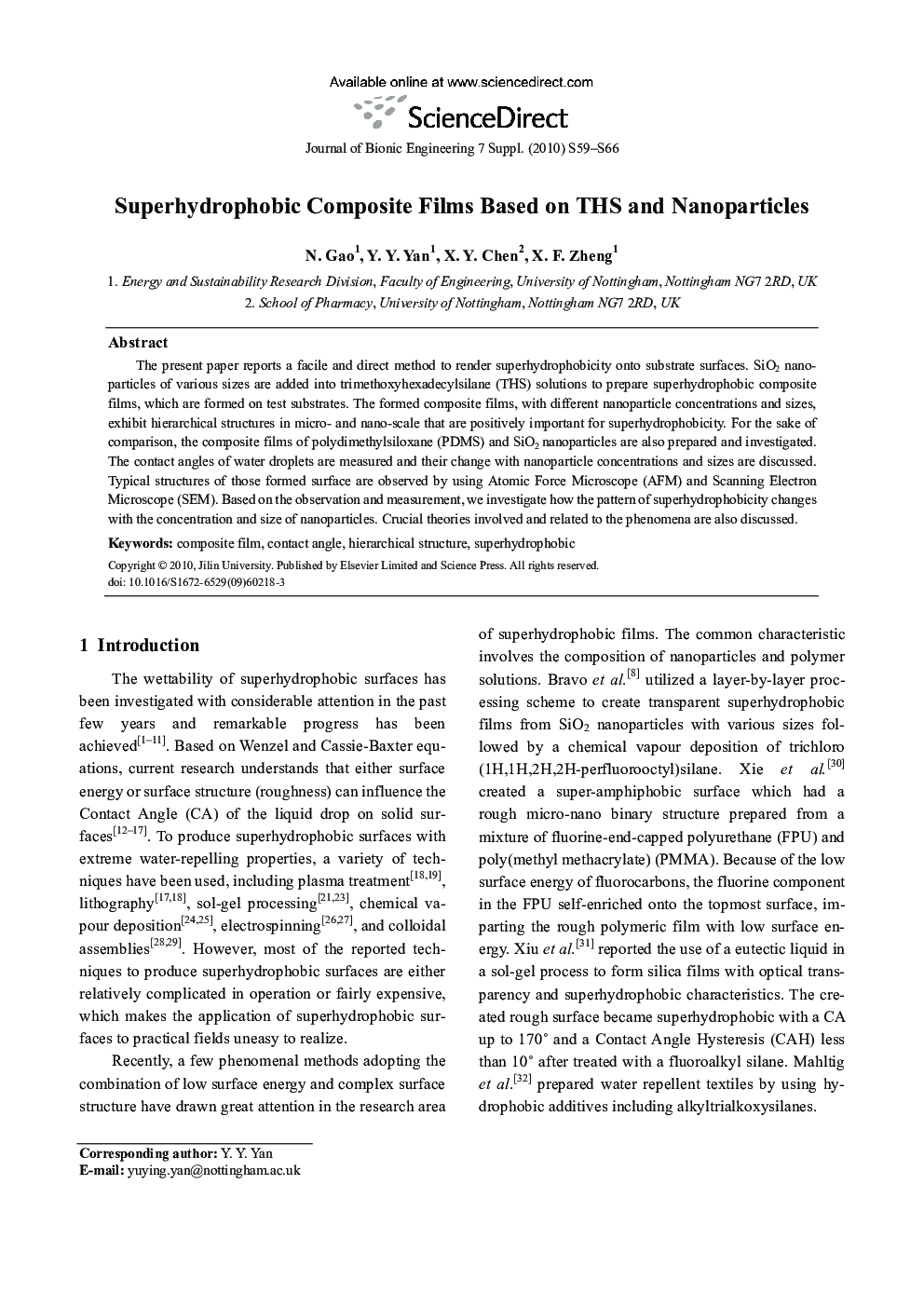| Article ID | Journal | Published Year | Pages | File Type |
|---|---|---|---|---|
| 826990 | Journal of Bionic Engineering | 2010 | 8 Pages |
The present paper reports a facile and direct method to render superhydrophobicity onto substrate surfaces. SiO2 nanoparticles of various sizes are added into trimethoxyhexadecylsilane (THS) solutions to prepare superhydrophobic composite films, which are formed on test substrates. The formed composite films, with different nanoparticle concentrations and sizes, exhibit hierarchical structures in micro- and nano-scale that are positively important for superhydrophobicity. For the sake of comparison, the composite films of polydimethylsiloxane (PDMS) and SiO2 nanoparticles are also prepared and investigated. The contact angles of water droplets are measured and their change with nanoparticle concentrations and sizes are discussed. Typical structures of those formed surface are observed by using Atomic Force Microscope (AFM) and Scanning Electron Microscope (SEM). Based on the observation and measurement, we investigate how the pattern of superhydrophobicity changes with the concentration and size of nanoparticles. Crucial theories involved and related to the phenomena are also discussed.
